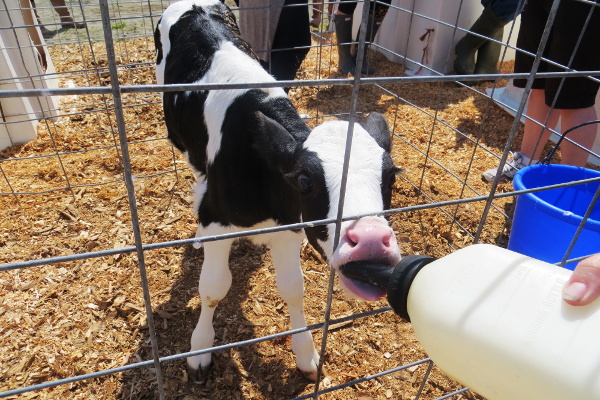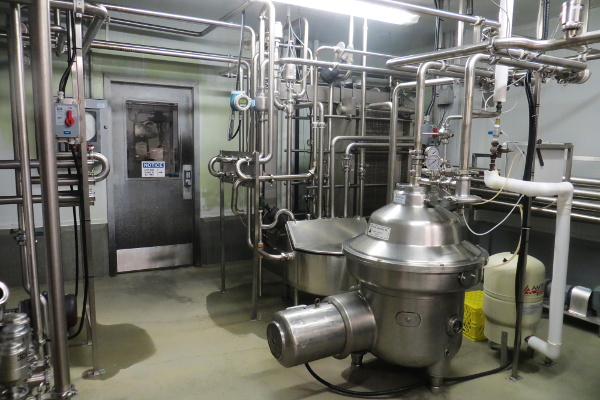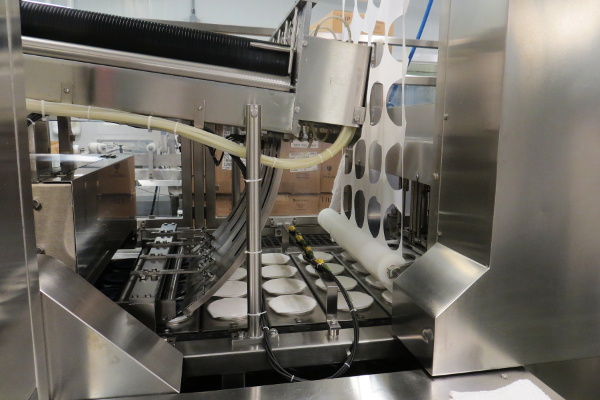I looooove How It’s Made and Making Stuff (♫ makin’ stuff makin’ stuff MAKIN’ STUFF♫) so when I was invited on a media trip to see how yogurt is made I accepted pretty much immediately.
We went to Brandsema organic dairy farm in Abbotsford first. We got a tour of the farm to look at the cows, feed baby cows, watch the cows being milked, and see the milk being loaded on to the truck. Then we went to the Olympic Dairy factory in Delta, saw the milk coming into the factory, being pasteurized, poured into tubs, packaged, incubated, refrigerated and then loaded up onto trucks. It was pretty cool to see the whole process from cow to supermarket. And then we got to do a tasting session and try like 20 different types of yogurt. NOM.

The cows get to spend a lot of time in the fields, eating grass. They do get feed as well though (mostly corn and flax, plus soy, barley, peas) because apparently 100% grass-fed cows do not produce very much milk. They do not use hormones, and when antibiotics must be used the milk from those cows is dumped for a month.

Milking machines! They get milked twice a day and produce about 34 litres of milk per day per cow. It takes about 10 minutes to milk a cow.

1 day old newborn cow in the maternity ward.


We got to feed the baby cows. These ones were only a couple days old. D’awwwww. They were very thirsty. My cow yanked the bottle right out of my hands, haha.

All suited up for our tour of the yogurt factory.

Every truck of milk is tested for hormones and contamination before being accepted into the factory. Once approved, the milk comes into the factory into this room and these pasteurizing machines and mixing tanks.

The milk powder and cultures are added and then the mixture is poured into the yogurt tubs. Because they (mostly) make Balkan style yogurt the yogurt sets directly in the tubs.

Plastic seals and lids.

This room was 110°F. The tubs sit in here for 5 hours while the milk turns into yogurt.

And then it’s moved to refrigerated rooms for storage until the orders are picked and loaded onto trucks for the supermarkets! That’s a lot of yogurt!!
All together it takes about 12 hours to make a tub of yogurt (3 hours for pasteurizing, then packaged, 5 hours for ripening, then several hours for cooling). A sealed tub of Olympic yogurt lasts for 49 days, so if you look at the dates on the tubs at the store you should be able to tell how fresh it is. Once opened they can only guarantee the quality for a few days, since they only use natural ingredients. I can tell you that a tub of Krema is not going to last me for more than a few days anyway because it is ULTRA DELICIOUS. Seriously you could put Honeylicious Krema yogurt in a cone and eat it like soft serve ice cream.
We got to try a whole bunch of their line, the fruit yogurt, Krema (10% MF deliciousness omg), chia yogurt (tasty and very convenient!), kefir, and more. At the very end of the session we got to try a new flavour that hasn’t even come out yet… pumpkin spice. A lot of the bloggers lost their minds about this, haha. It will come out in time for back to school.
Anyway, a very informative and interesting day. And now I’m going to go make myself a bowl of Krema with raspberries…
Good pictures! Super cute!